Recent Storm Damage Posts
Storm Services
10/16/2022 (Permalink)
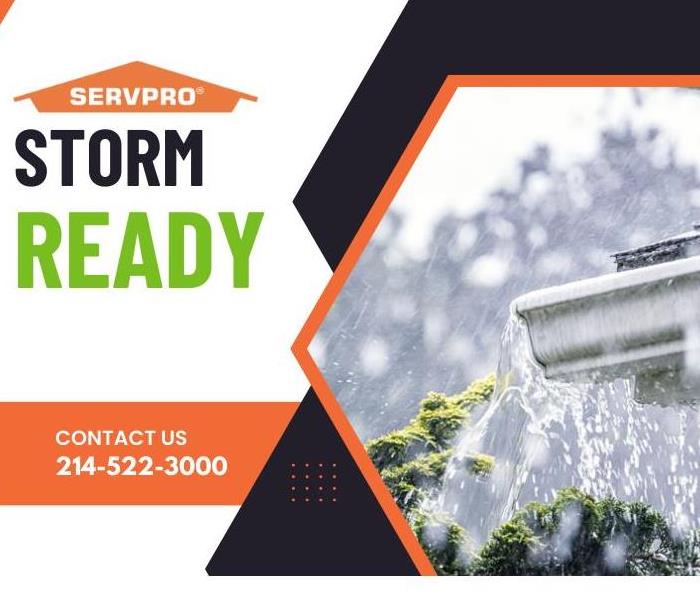 SERVPRO can help when storms hit.
SERVPRO can help when storms hit.
SERVPRO of Park Cities has handled large scale storm events such as hurricanes, tornadoes, floods, and polar vortexes in the DFW area.
One of the ways we've helped home and business owners is with our roof tarping and board up services. When a storm or other emergency leaves you open to the elements, you must act quickly to help prevent further damage and protect your home’s interior.
If you experience roof damage from a storm or other emergency, SERVPRO of Park Cities can help address the damage quickly to avoid further exposure to the elements.
Our Disaster Recovery Teams can respond quickly because we have a network of storm teams strategically positioned across the country ready to respond 24/7, 365 days a year.
Avoid Tree Damage
10/16/2022 (Permalink)
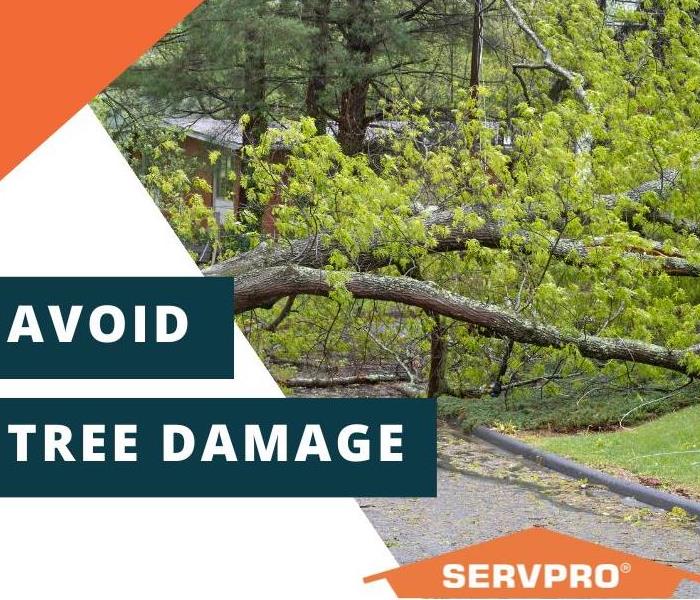 Tree maintenance can keep you safe.
Tree maintenance can keep you safe.
Trees are great for shading but if not properly maintained they can become dangerous in a storm. High winds can cause branches to split or break and fall on the roof or through a window. When this happens, water comes into the house and creates havoc on your floors and furniture.
Make sure to keep your trees trimmed properly so they are less susceptible to breakage during a storm. Also, when a storm blows in, close the curtains, blinds or shutters to minimize broken glass that can get in your house if the window breaks.
SERVPRO of Park Cities offers comprehensive support for homeowners facing storm damage.
Our phones are answered 24 hours a day, 7 days a week. Once we have your info, we deploy our teams as quickly as possible with the equipment to begin extraction and drying. We also have licensed contractors to board up windows or other compromised walls to prevent further damage. We will remove the fallen tree and anything that cannot be restored
Keep our number handy – (214) 522-3000 because the faster we receive the initial call, the faster we begin mitigation. A flooded home requires professional restoration services and SERVPRO of Park Cities is available 24 / 7 to help.
Storm Safety 101
10/16/2022 (Permalink)
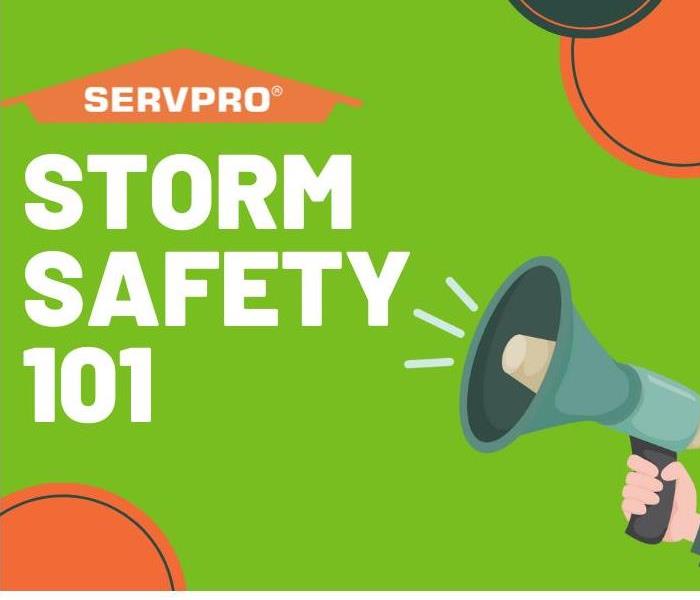 Know what to do to avoid storm damage.
Know what to do to avoid storm damage.
Even though we’re headed into fall – we’re not completely clear of hurricane season yet. The good news is we usually have a substantial heads up for storms of this magnitude. But not all storms give us fair warning – if elements combine in just the right way – we can get thunder, lightning and wind worthy of worry. Although storms are unpredictable, there are things we can do to keep our homes and offices safe from damage.
- Keep trees manicured and gutters clean.
- Make sure your roof is in good shape.
- Move your car into the garage to avoid hail damage.
- During a storm, stay on top of developing concerns by watching the news or consulting your weather app regularly.
- Do not go outside in a storm unless it is absolutely necessary.
- Don’t sleep near a window if there are high winds or a tornado warning.
- Make sure pets are safe inside before a storm starts.
- Keep a flashlight near and charge your phone in the event of a power outage.
At SERVPRO Park Cities, we are always watching the weather and preparing to help in the event of water or fire damage. Our professional equipment and technicians are available 24 hours a day, 7 days a week. We’ve also developed an Emergency Readiness Profile® that can be used to evaluate your home or business so that you feel confident that you'll be safe in a storm.
This is a FREE assessment – find out more here https://ready.SERVPRO.com/home/readyprogram.
Be Roof Ready
10/16/2022 (Permalink)
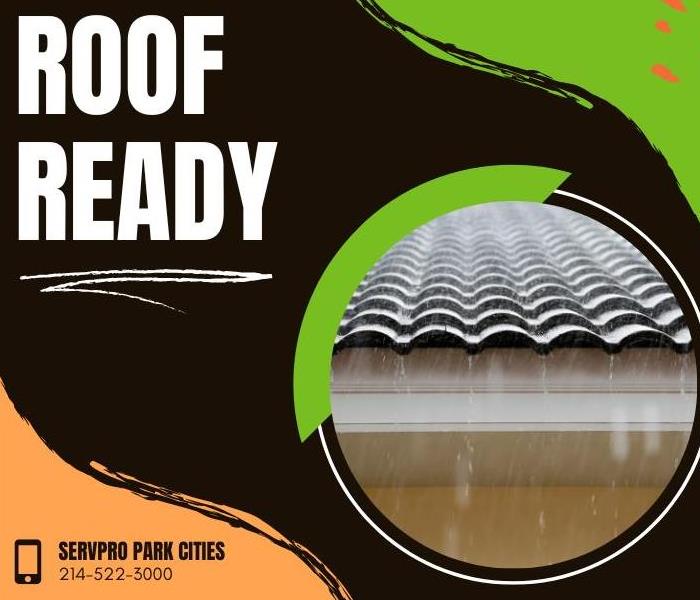 Your roof is your first line of defense in a storm.
Your roof is your first line of defense in a storm.
Your roof is your first line of defense when it comes to storms so it's essential to keep it in great shape. You should regularly check the roof for holes or missing shingles because even the smallest hole can cause big problems. Water leaks create structural damage, ruin rugs and furniture and lead to mold issues in your home. A thorough roof inspection by a professional once a year is also a good idea.
You should also keep trees cut back so that they can't hurt the roof if a branch falls during a storm. And keep your gutters cleaned out so they don't get clogged and overflow during severe weather.
If you experience any post-storm water damage, call SERVPRO of Park Cities right away. Our highly trained experts are available 24 hours a day, 7 days a week and have the experience, competence, and the proper equipment to assess damage and restore your property. A fast response lessens the damage, limits further damage, and reduces the restoration cost.
Emergency Kits
10/16/2022 (Permalink)
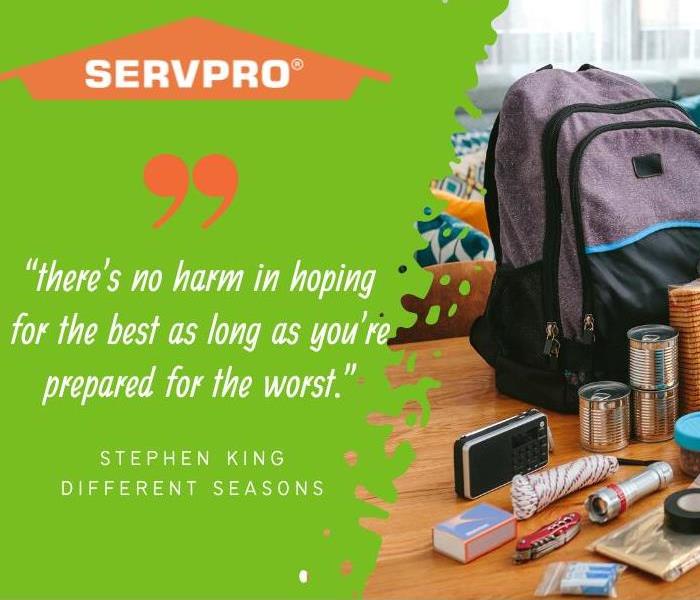 Essential items in your emergency kit.
Essential items in your emergency kit.
Part of being prepared is having an Emergency Plan and part of that plan is an Emergency Kit.
Two years ago we experienced an unexpected winter storm and many people weren't prepared for the power outages and retail closures that came with "Snowmageddon." A properly packed Emergency kit could have helped make things more bearable.
The Red Cross recommends that an emergency kit have enough supplies for at least 72 hours and should include the following:
- Water (at least one gallon per person, per day,) This is especially helpful if your house sustains flood damage and you have to turn the water off.
- Non-perishable snacks such as peanut butter, beef jerky, granola bars or fruit.
- A manual can opener.
- A cell phone battery that can charge your phones.
- Matches and/or firewood if you have a wood-burning stove.
- At least 1 powerful flashlight - but ideally 1 per person in the home.
- A sleeping bag for each person in the house.
- Extra supplies such as toilet paper, baby wipes, garbage bags, and twist ties.
- Make sure you have enough medication for several days if a storm is in the forecast. It's also a good idea to have pain relievers and stomach aids in the house.
- Books and board games to help keep kids occupied if stuck at home.
- If it's a winter storm - hand warmers can be helpful if the heater goes out.
While not necessary for survival, these things could also come in handy in the aftermath of a big storm:
- A camping stove for cooking
- Wrench or pliers to turn off utilities and a multi-tool (such as a Leatherman)
- A list of emergency numbers, including family contacts (keep in mind your cell phone might run out of batteries or be damaged during an emergency)
- A gas powered generator.
- An emergency medical book if medical help is unavailable or delayed. One good option is “The Survival Medicine Handbook.”
Preparing for emergencies can be scary, but knowing you’ll be ready for anything is equally, if not more, empowering.
For more information about what you can do to recover from unexpected storm damage please visit our website or call us at 214-522-3000.
STORM STORIES - TRUE OR FALSE
10/11/2021 (Permalink)
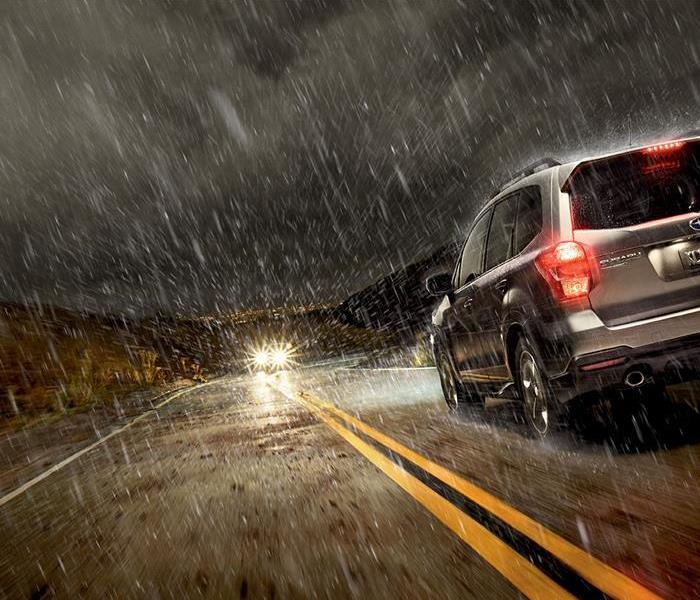 Know your storm facts to stay safe.
Know your storm facts to stay safe.
We looked for common misconceptions to help keep you safe when in a storm:
If you’re driving during a tornado – just park under an overpass to stay safe.
FALSE – Winds actually accelerate underneath an overpass and become quite dangerous. It’s best to pull over, duck below the windows, keep your seatbelts fastened and cover your head with a blanket or cushion until the storm passes.
The low pressure with a tornado causes buildings to explode. Opening the windows will equalize the pressure, saving the building.
FALSE - Opening the windows in an attempt to equalize pressure will have no effect. It is the violent winds and debris that cause most structural damage. It is more important for you to move to a safe area away from windows and exterior walls.
Tornadoes and thunderstorms tend to move from west to east.
TRUE (SORT OF): Conditions determine how and where storms move, but more often than not they do move from west to east.
Since I drive an SUV, I don’t have to worry about driving through water.
FALSE – any car can be swept away in as little as 2 feet of water. Flash floods happen in a flash – whether there is a stream nearby or not so always be careful when driving through a puddle.
Know your storm facts so that your stories all have a happy ending.
Lightning Lessons
11/13/2020 (Permalink)
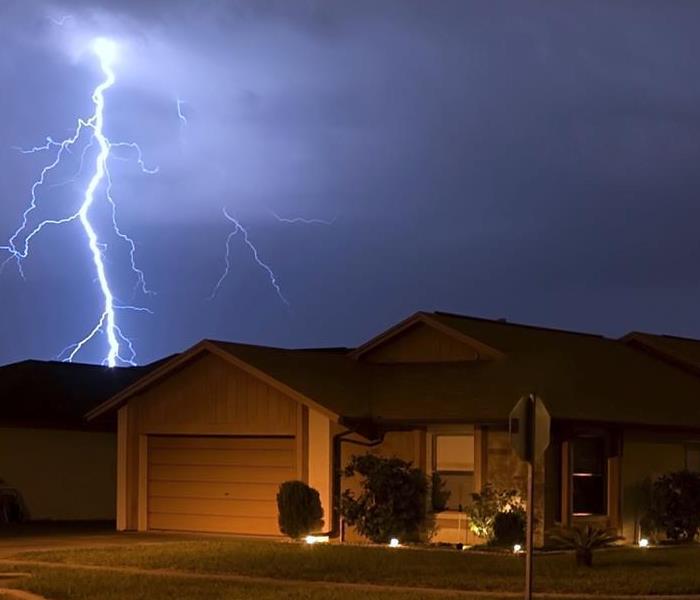 Lightning can be dangerous to you and your property. Know what to do in a storm.
Lightning can be dangerous to you and your property. Know what to do in a storm.
Lightning can be unpredictable, increasing risk of electrocution or damage. Here are a few lessons to keep you safe from the storm. Remember, if you can hear thunder then you’re close enough to be struck by lightning.
Rain isn’t actually required for lightning to occur – a storm's footprint is larger than just the rainfall and lightning can strike as far as 10 miles away.
Lightning can also happen in the absence of thunder. Technically there is thunder - but it's so far away that people don't hear it. This is known as "heat lightning" and usually means the storm is headed your way so it's best to take precaution.
IF someone is struck by lightning, they will survive more often than not. However survivors often have long lasting effects. Lightning strike victims carry no electrical charge and should be attended to immediately.
Most lightning deaths and injuries occur when people are caught outdoors - if you're outside when a storm approaches, find shelter in a sturdy building or car. Do not take shelter in small sheds, under isolated trees, or in convertible automobiles. If you are in a car - make sure you aren't touching any metal from the car.
The pipes in your home can conduct electricity - as well as water. Many houses are grounded by rods and other protection that conduct a lightning bolt's electricity harmlessly to the ground. Even so, you should never get in the bath or shower during a storm.
Lightning causes power surges, so unplug appliances and other electrical items – especially computers and televisions.
SERVPRO of North Garland can help you recover from any storm damage - and we are available 24/7.
Trees and Storms = Possible Flood Damage
11/4/2020 (Permalink)
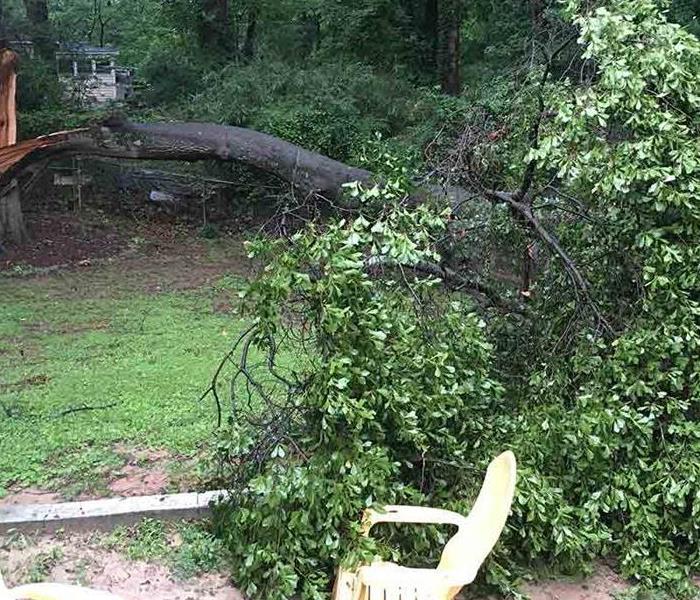 Keep trees properly trimmed to minimize storm damage.
Keep trees properly trimmed to minimize storm damage.
Big windows are great for letting natural light into a room and trees in your yard provide much needed shade. But the combination of them in a bad storm can cause lots of damage. If a tree splits or a limb breaks and falls through a window, water can get in and cause damage to your floors and furniture. SERVPRO of Park Cities offers comprehensive support for homeowners facing flood damage.
Our team will arrive as quickly as they can with the equipment to begin extraction and drying. We also have licensed contractors to board up windows or other compromised walls to prevent further damage. We will remove the fallen tree and anything that cannot be restored
Keep our number handy – (214) 522-3000 because the faster we receive the initial call, the faster we begin mitigation. It’s also a good idea to keep your trees trimmed properly to avoid weak points that are more susceptible to breakage. When a storm blows in, close the curtains, blinds or shutters to minimize the broken glass that can get in your house if the window breaks. Remove anything that you can from the floor to avoid further water damage and use towels to soak up what you can until we get there. A flooded home requires professional restoration services and SERVPRO of Park Cities is available 24 / 7 to help.
These 3 Things Can Save You Time and Money From Storm Damage.
10/16/2020 (Permalink)
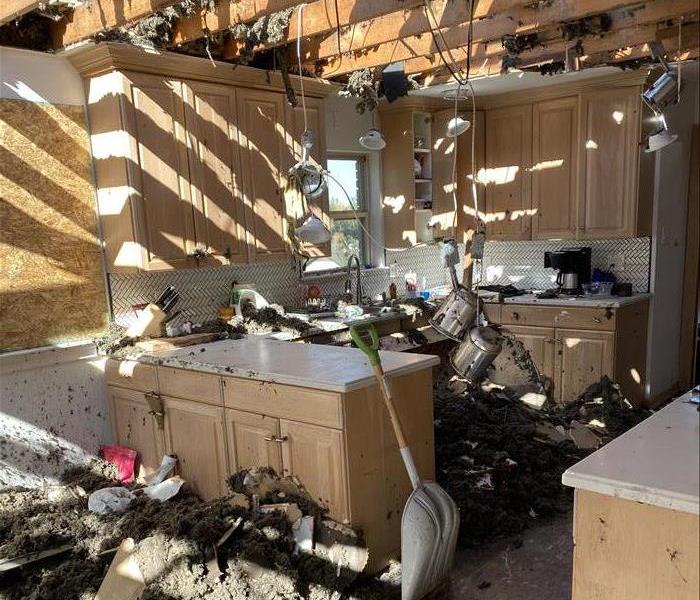 Disaster Can Strike at Any Time. Be Prepared.
Disaster Can Strike at Any Time. Be Prepared.
Just over a year ago, DFW suffered heavy damage from a tornado that ripped through Preston Hollow, Richardson and Garland. All of Dallas, including Park Cities lost electricity, some households for multiple days. Other families sustained significant damage from the storm and hundreds of businesses had to close for restoration, and some weren’t able to reopen.
Our team at SERVPRO was deployed to conduct several post-storm inspections, working closely with families and their insurance companies to determine how to put their homes back together. That process included storing furniture on behalf of the victims and working directly with insurance companies to get the proper inspection reports and recovery estimates built. This is a highly stressful experience and SERVPRO professionals were able to ease that a little with a fast response as well as knowledge of the claim process.
Today, many of those homes have been rebuilt and now look “Like it never even happened,” businesses are open again and people understand how quickly a storm can become destructive. There have been a lot of learnings about the benefits of preparedness as well. Families are building their Emergency Kits and businesses are turning to SERVPRO to develop an Emergency Readiness Plan (ERP) which can expedite recovery from natural or man-made disasters.
Below are 3 important things your family can do so that you’re ready for anything.
- Build an Emergency Kit (read this blog for details) & map all possible evacuation routes from your home.
- Scan important documents, inventory and photograph your possessions, and upload all of it to a cloud-based program.
- Keep connected to a source of weather news and make sure your phones are charging every night.
If you would like to schedule an evaluation of your home or business so that we can prepare an Emergency Readiness Plan for your family, call SERVPRO of Park Cities at 214-522-3000.
When Storms are the Norm
10/14/2020 (Permalink)
 Be ready when storms hit Park Cities.
Be ready when storms hit Park Cities.
If you grew up here in North Texas, then you know how quickly a storm can suddenly happen. When the moisture levels, temperature and lift combine in just the right way, we get thunder, lightning and wind – or worse, tornadoes. Storms can cause trouble inside and outside the house; flooding, fallen tree branches or hail can all cause potential damage. Even though storms are unpredictable, there are things we can do to keep our homes and offices ready and prepared.
Knowledge is Power.
Make sure to stay connected to news sources either online or on TV. There are many weather tracking apps for smart phones as well – TripSavvy rated the top apps in September of this year – read about them here.
Knowing someone is safe during, or after a storm is comforting – so make sure your mobile phone is charged and contact lists are up to date so you can easily reach out. If you happen to witness someone in distress you can let first responders know through Twitter. This technology saved many Houstonians during tropical storm Harvey.
You can also place your status and name on Facebook Safety Check or the American Red Cross’s Safe & Well check-in. This is a good way to let lots of people know you’re ok.
Keep Your Information Safe.
Floods can ruin files so have copies of your important documents (household inventories, marriage, birth or death certificates, etc.) stored in a water tight bag that you keep in your Emergency Preparedness Kit – or you can also upload them to a cloud-based platform. Ready.gov suggests saving an electronic version of insurance policies, identification documents, medical records, and information on your pets, if necessary.
Always be Prepared
At SERVPRO of Park Cities, we are always watching the weather and preparing to help in the event of water or fire damage. Our professional equipment and technicians are available 24 hours a day, 7 days a week.
We’ve also developed an Emergency Readiness Profile® that can be used to evaluate your home or business so that you feel confident you’re ready for one of those crazy storms we get in Park Cities.
This is a FREE assessment – find out more here https://ready.SERVPRO.com/home/readyprogram.
Your Storm Emergency Kit
10/6/2020 (Permalink)
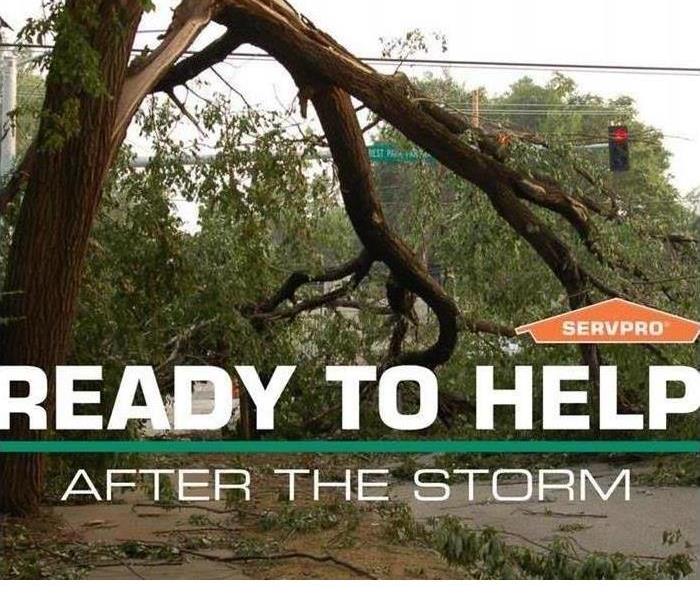 At SERVPRO of Park Cities we are ready to help after the storm.
At SERVPRO of Park Cities we are ready to help after the storm.
If there is a sudden storm in Park Cities, you may not have the time or presence of mind to quickly gather everything you need for a few days. This is why it’s a good idea to pre-pack a storm emergency kit and have it easily accessible in case of emergency.
The Red Cross recommends storing items in airtight plastic bags or easy to carry containers such as plastic bins or backpacks. Your emergency kit should have enough supplies for at least 72 hours and should include the following:
- Water (at least one gallon per person, per day)
- Food (more on this below)
- Battery-powered or hand-powered radio and extra batteries
- At least 1 high-powered flashlight
- Whistle (to signal for help)
- Matches in a waterproof container
- Dust masks
- Cellphone with charger and/or solar charger
- Baby wipes, garbage bags, and twist ties (for sanitation)
- Blankets or sleeping bags for each person in the family.
- Cash (in small bills)
- A first aid kit and any medications that your family needs as well as over the counter meds such as pain relievers or stomach aids.
- A complete change of seasonally appropriate clothing for every member of your family
- Personal care items for each member of your family (toothbrushes, toothpaste, wipes, deodorant, diapers, feminine hygiene items)
- Pet food, leash and supplies
While not necessary for survival, it’s also good to have these items on hand:
- Plastic sheeting and duct tape, or emergency tents
- Trash bags
- A camping stove for cooking
- Wrench or pliers to turn off utilities and a multi-tool (such as a Leatherman)
- Copies of essential documents, such as birth certificates, IDs, wills, health insurance cards, immunization records, all stored in a sealed Ziploc bag
- A list of emergency numbers, including family contacts (keep in mind your cell phone might run out of batteries or be damaged during an emergency)
- An emergency medical book if medical help is unavailable or delayed. One good option is “The Survival Medicine Handbook.”
And since the spring of 2020, the CDC has also recommended people include items in their kits to help prevent the spread of coronavirus or the flu, such as cloth face coverings, soap, hand sanitizer, and disinfecting wipes.
Best Foods for Your Emergency Kit
You’ll want foods that are nonperishable and require little, if any, time to cook. It is likely your power and water will be out, so include a manual can opener and disposable eating utensils. Some good things to include are:
- Peanut butter and crackers
- Beef jerky
- Powdered soup mixes
- Powdered drink mixes (like Gatorade)
- Instant coffee or tea
- Whole grain cereal
- Granola bars or protein bars
- Canned fruits and vegetables
- Canned meats (like tuna, chicken, or SPAM)
- Canned or bottled juices
- Dried fruit & nuts
- Comfort foods (like cookies or chocolate)
- Baby food or formula (if necessary)
- Shelf-stable milk
You can purchase ready made kits online, however, it’s much more affordable to assemble it yourself. This allows you to pack supplies tailored to your family’s unique situation and needs. For families with kids, it’s a good idea to get them involved in the assembly process. Let them pick out their change of clothes and a couple of toys. They can carry their own backpacks with a small water bottle, some granola bars, extra wipes and maybe a book.
Preparing for emergencies can be scary, but knowing you’ll be ready for anything is equally, if not more, empowering.
For more information about what you can do to recover from unexpected disaster please visit our website here or call us at 214-522-3000.
SERVPRO of Park Cities, always here to help.
Is Your Roof Storm Ready?
10/6/2020 (Permalink)
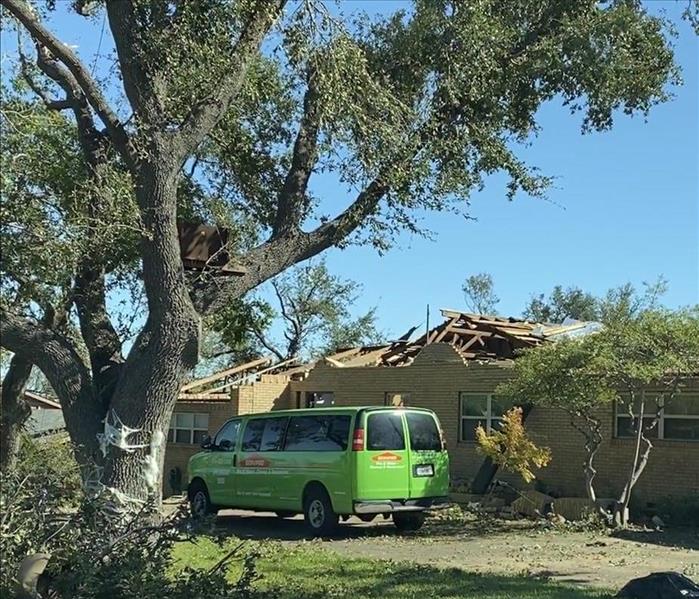 During a storm here in Dallas, TX, SERVPRO of Park Cities responded immediately after the storm to assist.
During a storm here in Dallas, TX, SERVPRO of Park Cities responded immediately after the storm to assist.
When it comes to storms in North Texas, our roofs are the first line of defense against rain, wind and hail. To make sure your roof is ready, you should check it regularly and look for missing shingles and holes. If the weather gets bad, the last thing you want to worry about is whether or not your roof will hold up, so it’s also a good idea to schedule at least one professional assessment per year.
Even the smallest hole in your roof can cause big problems if a hard storm hits. Water leaks create structural damage, ruin rugs and furniture and lead to mold issues in your home.
If you experience any post-storm water damage, call SERVPRO of Park Cities right away. Our highly trained experts are available 24 hours a day, 7 days a week and have the experience, competence, and the proper equipment to assess damage and restore your property. A fast response lessens the damage, limits further damage, and reduces the restoration cost.
North Texas Tornado Damage in Park Cities
10/25/2019 (Permalink)
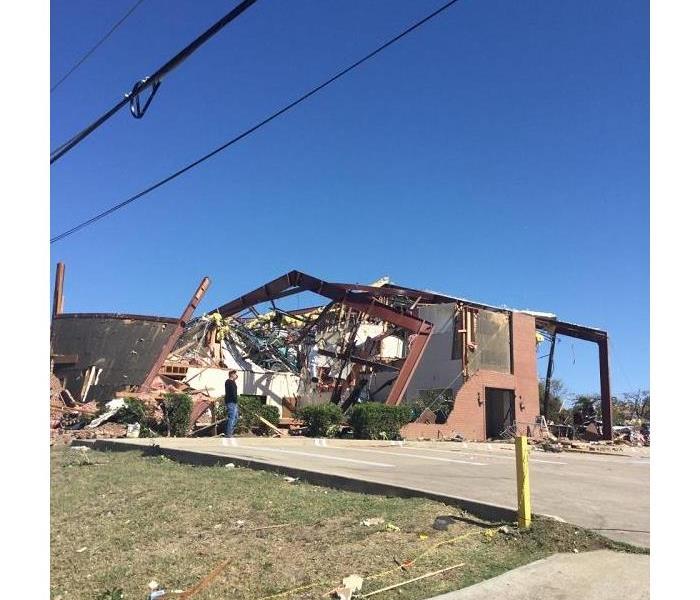 Many homes were affected by this recent storm damage. SERVPRO of Park Cities is out offering their services to the community.
Many homes were affected by this recent storm damage. SERVPRO of Park Cities is out offering their services to the community.
On October 20th 2019 tragedy struck the DFW metroplex in the form of tornadoes touching down in multiple cities. Some of the affected areas include, Richardson, Garland, Wylie, Dallas, and many others. The strongest of the tornadoes, classified as an EF-3 which had winds up to 140 mph, made it’s way through a densely populated area where many of the residents had heavy damage to or lost their property all together. The devastation to the homes and families is on a large scale but fortunately no deaths or missing persons have been reported.
Now what does this mean for Dallas residents? The clean up effort is well on the way with foundations such as the Red Cross setting up places to take donations. First responders were on the scene for the first 6 hours after the tornado making sure no one was trapped under collapsed rubble. Many families have had to relocate from their homes while insurance determines whether or not it is salvageable. SERVPRO of Park Cities is partnering with home owners and insurance companies and going out and assessing the damage to these homes. We provide restoration services as well as clean ups for water damage and storm damage. We also help residents move out of their homes while also storing and cleaning their items until they are ready to be moved back into the home.
Times of tragedy can be heartbreaking. SERVPRO of Park Cities, is here to take away some of that heartbreak. Give us a call at 972-496-2441.
Tornado Safety in North Texas Tornado Alley.
10/13/2019 (Permalink)
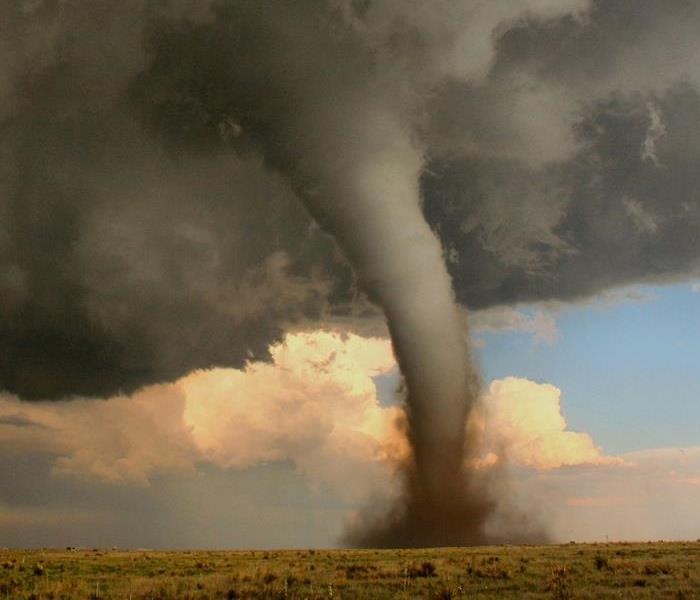 SERVPRO Urges Your to remain safe during these emergencies. Being prepared can minimize damages.
SERVPRO Urges Your to remain safe during these emergencies. Being prepared can minimize damages.
Since North Texas is located in "Tornado Alley" - an area of North America prone to tornadoes includes the states of Texas, Oklahoma, Kansas, Nebraska, and South Dakota - many of us that live here are used to dealing with the threats that tornadoes provide, but is our knowledge really up to scratch? Tornado season is typically around mid-March through June (although tornadoes can occur at anytime of the year), check out these tips to see if you know everything you need to know about staying safe during a tornado.
- You should NOT open windows during a tornado. It is a common myth that it equalizes the pressure in your house; however, it does not do anything other than cause you to spend precious time outside of your shelter area. Doors should also not be opened, as it makes it easier for dangerous debris to fly into the house.
- Always pick an interior room, on a ground floor, and without windows as a shelter. If it is an option try to be in a room close to the north or northwest side of your home as tornadoes approach from the southwest typically. Hide under a sturdy piece of furniture or in a bath tub within your shelter area.
- Tornadoes are most likely to occur between 3 PM and 9 PM, but can occur at anytime.
- A tornado watch means that the conditions are right for a tornado, while a warning means that a tornado has touched down or there is circulation in your area. You should seek shelter immediately if a warning is issued.
- Never seek shelter under an overpass if you are driving during a tornado situation. Try to get off of the road and into a building as soon as possible. Many tornadoes can easily move cars, so you could be blown out from under an overpass or it could collapse on top of you.
If you experience any damage to your home or business during this storm season call SERVPRO of Park Cities 214-522-3000.
Record Breaking Storm in the Texas Region
10/8/2019 (Permalink)
In August 2017, Hurricane Harvey dumped an estimated 27 trillion gallons of water across Texas and Louisiana which caused damage to over 200,000 homes. The economic losses are upwards of $180 billion. Unfortunately, flooding is not something that only coastal cities have to deal with. Flooding can occur for a variety of reasons and at any time, so it is best to be knowledgeable and prepared in case a flooding event happens in your area.
Stay Safe During a Flood with These Tips
- Put the safety of you and your family members above all else. Items can be replaced, you cannot. Evacuate when necessary, stay with friends or in a shelter, and avoid entering flood waters whenever possible.
- Prepare for potential flooding during a storm by creating an emergency kit,
- securing your home, moving all essential items to an upper level, disconnecting electrical equipment, and turning off utilities.
- Do not walk through moving water that is more than 6 inches high. Half a foot of moving water is enough to make you fall. You should also not drive into flooded areas, as flood waters can rise quickly.
- Do not enter any flooded areas before the electricity has been turned off, and do not attempt to use any electronic devices.
- Even if flood waters appear clear they may be contaminated. During a flood the water can be a combination of river and lake water, rain, runoff, or even backed up sewers. Avoid ingesting any flood water at all costs and try to prevent skin contact, especially if you have any open wounds.
- Avoid cross contaminating clean rooms by removing any items of clothing that may have come into contact with flood water prior to entering the undamaged rooms in your home.
- If you do have to walk into water use rubber boots for any areas that are below knee level. They will protect you from contaminants and electric shocks. If possible, avoid walking through water that is above knee level unless you are wearing waders – chest high, water proof pants attached to rubber boots. Use rubber gloves when handling any items that have been contaminated by flood water.
- Take pictures of the damage in your home, and share them with your insurance agent.
- Avoid using the water supply until it has been deemed safe by your city. Boil if necessary.
- Use your cell phone sparingly, and charge at every opportunity.
- “Do it yourself” cleaning after a water damage can be difficult to accomplish, especially if stores are closed or if they are sold out of equipment. Wet walls can take a long time to dry, particularly if the insulation has been soaked through, and mold can grow within 24 hours. In a flooding event you need professionals like the ones at SERVPRO of Park Cities. Our employees have the knowledge and experience to quickly restore your home to make it “Like it never even happened.” If you experience a flood damage, call us at 214-522-3000.
A How To On Recovering From Storm Damage
9/10/2019 (Permalink)
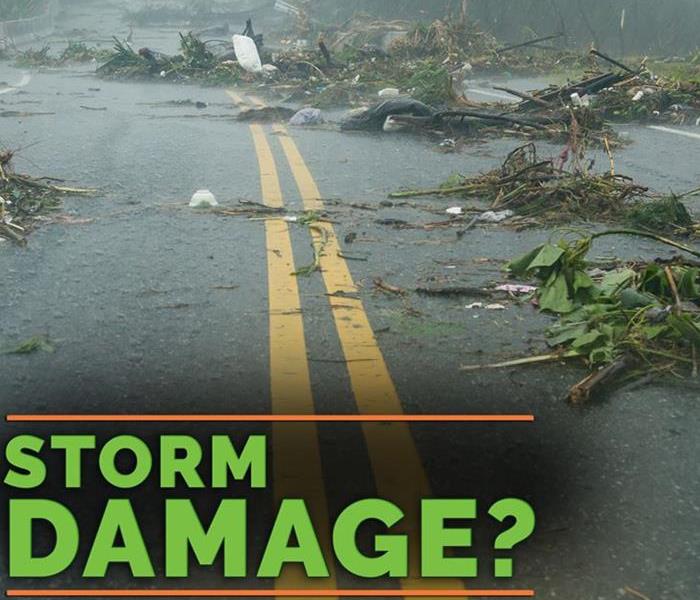 Let SERVPRO help you weather the storm.
Let SERVPRO help you weather the storm.
Imagine your house has been attacked by a huge storm. The strong winds broke windows, blew doors open, caused some roof destruction. The rain can now creep inside your home, the place where your family is, and can cause more damage. No one wants to imagine anything happening to their homes, especially their family, but in case of an emergency, we have to. We have to be prepared for whatever comes.
Here are some tips recommended by Cintas to minimize the results of storm damage on your home or business.
- Consider safety hazards.
- Watch out for loose debris. Know how to shut off the electricity in affected areas. Educate your employees and family on how to do this safely and correctly.
- Examine outside doors and windows.
- Outside doors and windows have easy access to the storm. Ensure the door handles and knobs as well as window locks are still working properly. This can help prevent more water entering and possible break ins.
- Disinfect contaminated surfaces.
- Remove all contaminated material when cleaning after a storm. Cleaning the contaminated areas will help not spread the infected areas to other surfaces.
- Restore plumbing and water line.
- After storm damage, specifically flooding, water lines can be clogged or cause them to backflow. By ensuring they are clear, it can limit the chance of closures and odor issues.
For some of these tips, oneself doesn’t have the experience to do all the work. You can contact your insurance agent and they can find contractors and cleanup crews to do the job. If by any chance you are not happy with who they have chosen, give us a call, SERVPRO of Park Cities at 214-522-3000 and we will gladly do all the dirty work for you.
Hope these helped. These are just a few tips on how to recover from storm damage.
Storm Emergency Kit Park Cities, be prepared!
9/6/2019 (Permalink)
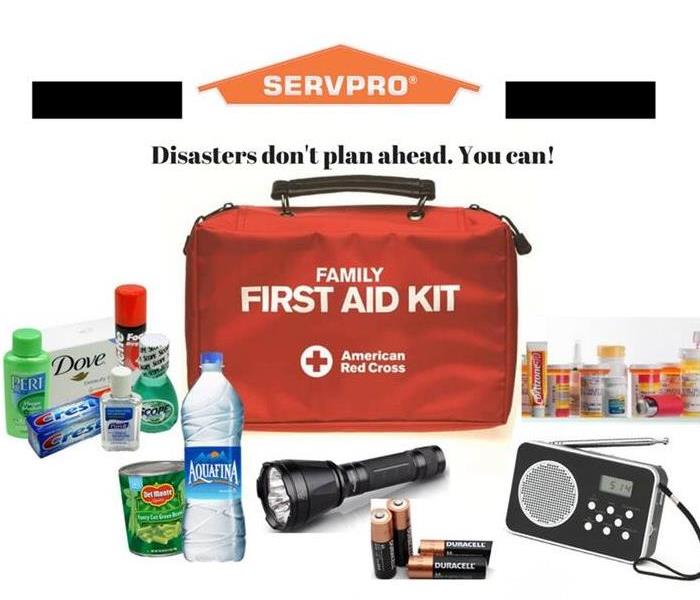 Emergencies are unexpected and out our control. The only thing we can control is our preparedness.
Emergencies are unexpected and out our control. The only thing we can control is our preparedness.
Is your family prepared for a storm? Are you prepared to survive in your storm shelter, wherever it may be, for up to a week? While storm tracking equipment is much more advanced than it once was, it will unfortunately never be able to predict the future so it is up to us to be prepared for any potential disaster situation. A good way to do that is to have a storm emergency kit prepared and easily accessible. Here are some good items to include in your kit:
- Non-perishable food (such as dried fruit or peanut butter)
- Can opener
- Trash bags and moist towelettes for sanitation reasons
- First aid kit with any necessary prescription medications
- Extra batteries
- Matches in a waterproof container
- Toothbrush, toothpaste, soap
- Paper plates, plastic cups and utensils, paper towels
- Water – at least a gallon per person, per day
- Battery-powered or a hand-cranked radio
- Sleeping bag or warm blanket for each person
- Flashlights
- Whistle
- Can opener (manual)
- Local maps
- Pet supplies
- Baby supplies (formula, diapers)
- Dust masks
- Cellphone with charger and/or solar charger
- Books, games, and puzzles.
For more information about what you can do to recover from unexpected disaster please visit our website here or call us at 214-522-3000.
SERVPRO Park Cities, always here to help.
Is Your Roof Storm Ready?
10/26/2018 (Permalink)
When it comes to our homes, and even commercial properties, our roofs are the first line of defense against storms. While spring is when severe storms are most likely to occur in North Texas, the long and cold rainy days we have during the winter often result in water damages when they penetrate through a roof that was not repaired after a heavy storm season earlier in the year.
In order to ensure your roof is ready for anything the weather may bring you should check for damage regularly. Missing shingles, signs of small leaks, or mold damage are some of the things you yourself can check for regularly, especially following a hard storm or consecutive bad weather days. If you suspect there may be any type of problem with your roof, you should call in roofing professionals that can give you a complete assessment. When the weather gets bad the last thing you want to worry about is whether or not your roof can hold up against a storm, so try to do regular inspections throughout the year and at least one professional assessment per year in order to protect your home.
If you have a water damage due to a roof leak at your home or business, call SERVPRO of Park Cities anytime at 214-522-3000. Our team can be onsite quickly to begin the restoration process as soon as possible.
Storm Damage Cleanup
7/23/2018 (Permalink)
While we typically consider storm season to be during the spring here in Texas, technically it is storm season all year round. Our high temperatures and tendency for drastic temperature changes overnight create the perfect environment for violent storms. Cleaning up after one of these storms can be frustrating and time consuming if you aren't sure where or how to start. SERVPRO is here to help whenever needed, but we have also compiled a list of tips that are useful for any home or business owner when it comes to storm cleanup:
- Consider safety hazards.
- Watch out for loose debris. Know how to shut off the electricity in affected areas. Educate your employees and family on how to do this safely and correctly.
- Examine outside doors and windows.
- Outside doors and windows are exposed to any and every storm. Ensure all door handles and knobs as well as window locks are still working properly. This can help prevent more water from entering and deter possible break ins.
- Disinfect contaminated surfaces.
- Remove all contaminated material when cleaning after a storm, particularly after a flood. Cleaning the contaminated areas helps to prevent the spread from infected areas to other surfaces.
- Restore plumbing and water line.
- After storm damage, specifically flooding, water lines can be clogged or cause them to back flow. By ensuring they are clear, you can limit the chance of closures and odor issues.
For any and all of your cleanup needs after a water, mold, or fire damage call SERVPRO of Park Cities at 214-522-3000.
Emergency Supply Kit
5/29/2018 (Permalink)
Severe weather can happen anytime, anywhere. In North Texas we are particularly prone to experiencing severe weather throughout every season.
Approximately 98% of all disasters declared emergent by the president are weather-related, leading to around 500 deaths per year and nearly $15 billion in damage. Preparing an emergency supply kit can help keep you and your family safe if you're ever caught in an severe storm situation.
Build an Emergency Supply Kit
- Water (1 gallon per person per day)
- Food (non-perishable 3-day supply)
- Manual can opener
- Battery operated radio, preferably a NOAA Weather Radio
- Flashlight and extra batteries
- First aid kit
- Whistle to signal for help
- Clothing
- Dust masks or bandanas
- Plastic sheeting, garbage bags and duct tape
- Wrench or pliers to turn off utilities
- Hygiene items
- Important documents; copies of insurance policies, identification and bank account information
- Cash
- Fire extinguisher
- Matches in a waterproof container
Contact SERVPRO of Park Cities for more readiness tips and tools, including SERVPRO’s Emergency READY Profile (ERP). Having an ERP in place for your facility can help minimize business interruption in the event of a disaster.
Tornado Knowledge
5/29/2018 (Permalink)
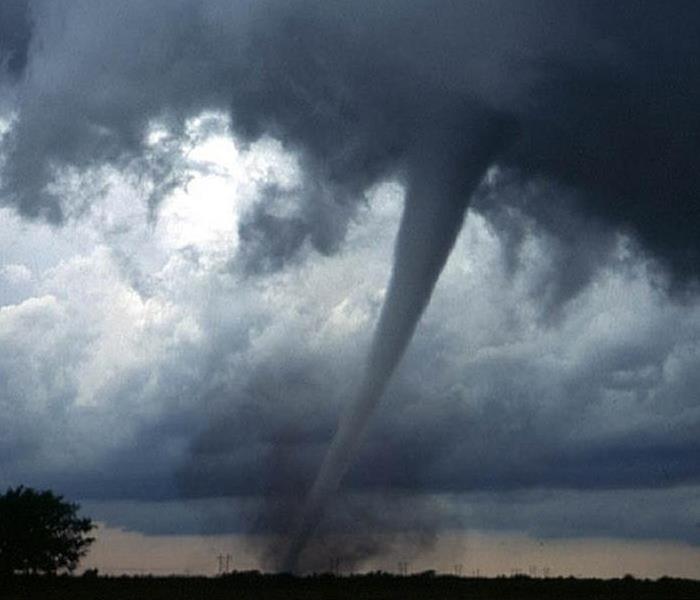 Tornado
Tornado
Since North Texas is located in "Tornado Alley" - an area of North America prone to tornadoes includes the states of Texas, Oklahoma, Kansas, Nebraska, and South Dakota - many of us that live here are used to dealing with the threats that tornadoes provide, but is our knowledge really up to scratch? Since we are currently in the middle of tornado season, mid-March through June (although tornadoes can occur at anytime of the year), check out these tips to see if you know everything you need to know about staying safe during a tornado.
- You should NOT open windows during a tornado. It is a common myth that it equalizes the pressure in your house; however, it does not do anything other than cause you to spend precious time outside of your shelter area. Doors should also not be opened, as it makes it easier for dangerous debris to fly into the house.
- Always pick an interior room, on a ground floor, and without windows as a shelter. If it is an option try to be in a room close to the north or northwest side of your home as tornadoes approach from the southwest typically. Hide under a sturdy piece of furniture or in a bath tub within your shelter area.
- Tornadoes are most likely to occur between 3 PM and 9 PM, but can occur at anytime.
- A tornado watch means that the conditions are right for a tornado, while a warning means that a tornado has touched down or there is circulation in your area. You should seek shelter immediately if a warning is issued.
- Never seek shelter under an overpass if you are driving during a tornado situation. Try to get off of the road and into a building as soon as possible. Many tornadoes can easily move cars, so you could be blown out from under an overpass or it could collapse on top of you.
If you experience any damage to your home or business during this storm season call SERVPRO of Park Cities 214-522-3000.
Storm Emergency Kit
5/29/2018 (Permalink)
Is your family prepared for a storm? Are you prepared to survive in your storm shelter, wherever it may be, for up to a week? While storm tracking equipment is much more advanced than it once was, it will unfortunately never be able to predict the future so it is up to us to be prepared for any potential disaster situation. A good way to do that is to have a storm emergency kit prepared and easily accessible. Here are some good items to include in your kit:
- Non-perishable food (such as dried fruit or peanut butter)
- Can opener
- Trash bags and moist towelettes for sanitation reasons
- First aid kit with any necessary prescription medications
- Extra batteries
- Matches in a waterproof container
- Toothbrush, toothpaste, soap
- Paper plates, plastic cups and utensils, paper towels
- Water – at least a gallon per person, per day
- Battery-powered or a hand-cranked radio
- Sleeping bag or warm blanket for each person
- Flashlights
- Whistle
- Can opener (manual)
- Local maps
- Pet supplies
- Baby supplies (formula, diapers)
- Dust masks
- Cellphone with charger and/or solar charger
- Books, games, and puzzles.
Be Prepared: Tsunamis
7/24/2017 (Permalink)
Did you know tsunamis can hit any U.S. Coast? While they are more likely to hit states on the Pacific coastline or in the Caribbean, it is good to know what to do if a tsunami does strike where you live, or even where you may vacation.
Ready.gov says "tsunamis, also known as seismic sea waves (mistakenly called "tidal waves"), are a series of enormous waves created by an underwater disturbance such as an earthquake, landslide, volcanic eruption, or meteorite." Areas within a mile of the coast and less than 25 feet above sea level have a greater risk of being hit.
As with any emergency, be sure you have a plan. know the evacuation plan and move inland or to higher ground and avoid the beach. "The first wave may not be the last or the largest," according to the National Weather Service.
After a tsunami, do not return to the affected area until officials deem it safe. While drowning is the most common hazard, there are many aftereffects such as flooding and contaminated drinking water.
For more information on preparing for a tsunami, visit ready.gov/tsunamis.
Shocking Facts about Lightning
5/31/2017 (Permalink)
Lightning is one of the leading causes of weather-related fatalities. Though the odds of being struck by lightning in a given year are only 1 in 500,000, some factors can put you at greater risk for being struck. Here are a few lightning safety tips.
Be aware. Check the forecast before participating in outdoor activities. If it calls for thunderstorms, postpone your trip or activity, or make sure adequate safe shelter is available.
Go indoors. Remember the phrase, “When thunder roars, go indoors.” Find a safe, enclosed shelter when you hear thunder. Safe shelters include homes, offices, shopping centers, and hard-top vehicles with the windows rolled up.
Avoid windows, doors, porches, and concrete. Do not lie on concrete floors and avoid leaning on concrete walls. Lightning can travel through metal wires or bars in concrete walls or flooring.
Avoid water. Do not bathe, shower, wash dishes, or have any other contact with water during a thunderstorm because lightning can travel through a building’s plumbing.
Avoid electronic equipment. Do not use computers, laptops, game systems, washers, dryers, stoves, or anything connected to an electrical outlet. Lightning can travel through electrical systems, radio and television reception systems, and any metal wires or bars in concrete walls or flooring. Equips homes and offices with whole-house surge protectors to protect appliances.
Be Storm Smart, Be Storm Ready
5/31/2017 (Permalink)
Severe weather can happen anytime, anywhere. Each year, Americans cope with an average of the following intense storms:
- 10,000 severe thunderstorms
- 5,000 floods or flash floods
- 1,000 tornadoes
- 2 landfalling deadly hurricanes
Approximately 98% of all presidentially declared disasters are weather-related, leading around 500 deaths per year and nearly $15 billion in damage. Knowing your risk of severe weather, taking action and being an example are just a few steps you can take to be better prepared to save your life and assist in saving the lives of others.
Know Your Risk. The first step to becoming weather-ready is to understand the type of hazardous weather that can affect where you live and work, and how the weather could impact you, your business and your family. Check the weather forecast regularly, obtain a NOAA Weather Radio, and learn about Wireless Emergency Alerts. Severe weather comes in many forms and your shelter plan should include all types of local hazards.
Take Action. Take the next step in severe weather preparedness by creating a communications plan for your home and business. Put together or purchase an emergency kit. Keep important papers and valuables in a safe place.
Be an Example. Once you have taken action to prepare for severe weather, share your story with co-workers and family and friends on Facebook or Twitter. Your preparedness story will inspire others to do the same.
Build an Emergency Supply Kit
- Water (1 gallon per person per day)
- Food (non-perishable 3-day supply)
- Manual can opener
- Battery operated radio, preferably a NOAA Weather Radio
- Flashlight and extra batteries
- First aid kit
- Whistle to signal for help
- Clothing
- Dust masks or bandanas
- Plastic sheeting, garbage bags and duct tape
- Wrench or pliers to turn off utilities
- Hygiene items
- Important documents; copies of insurance policies, identification and bank account information
- Cash
- Fire extinguisher
- Matches in a waterproof container
Contact SERVPRO of Park Cities for more readiness tips and tools, including SERVPRO’s Emergency READY Profile (ERP). Having an ERP in place for your facility can help minimize business interruption in the event of a disaster.
Understanding WEAs
5/31/2017 (Permalink)
Wireless Emergency Alerts (WEA) are emergency messages sent by authorized government alerting authorities through your mobile carrier. Government partners include local and state public safety agencies, FEMA, the FCC, the Department of Homeland Security, and the National Weather Service. Alerts received at the right time can help keep you safe during an emergency. With WEA, alerts can be sent to your mobile device when you may be in harm’s way, without need to download an app or subscribe to a service. WEA may share:
- Extreme weather warnings.
- Local emergencies requiring evacuation or immediate action.
- AMBER Alerts.
- Presidential Alerts during a national emergency.
A WEA will look like a text message. The WEA message will typically show the type and time of the alert, any action you should take, and the agency issuing the alert. The message will be no more than 90 characters.
How Do I Recover from Storm Damage?
9/27/2016 (Permalink)
 Call us, SERVPRO of Park Cities, at 214-522-3000! We can help!
Call us, SERVPRO of Park Cities, at 214-522-3000! We can help!
Imagine your house has been attacked by a huge storm. The strong winds broke windows, blew doors open, caused some roof destruction. The rain can now creep inside your home, the place where your family is, and can cause more damage. No one wants to imagine anything happening to their homes, especially their family, but in case of an emergency, we have to. We have to be prepared for whatever comes.
Here are some tips recommended by Cintas to minimize the results of storm damage on your home or business.
- Consider safety hazards.
- Watch out for loose debris. Know how to shut off the electricity in affected areas. Educate your employees and family on how to do this safely and correctly.
- Examine outside doors and windows.
- Outside doors and windows have easy access to the storm. Ensure the door handles and knobs as well as window locks are still working properly. This can help prevent more water entering and possible break ins.
- Disinfect contaminated surfaces.
- Remove all contaminated material when cleaning after a storm. Cleaning the contaminated areas will help not spread the infected areas to other surfaces.
- Restore plumbing and water line.
- After storm damage, specifically flooding, water lines can be clogged or cause them to backflow. By ensuring they are clear, it can limit the chance of closures and odor issues.
For some of these tips, oneself doesn’t have the experience to do all the work. You can contact your insurance agent and they can find contractors and cleanup crews to do the job. If by any chance you are not happy with who they have chosen, give us a call, SERVPRO of Park Cities at 214-522-3000 and we will gladly do all the dirty work for you.
Hope these helped. These are just a few tips on how to recover from storm damage.
SERVPRO of Park Cities / North Garland wants you to Stay Safe when Severe Storms Strike
4/28/2016 (Permalink)
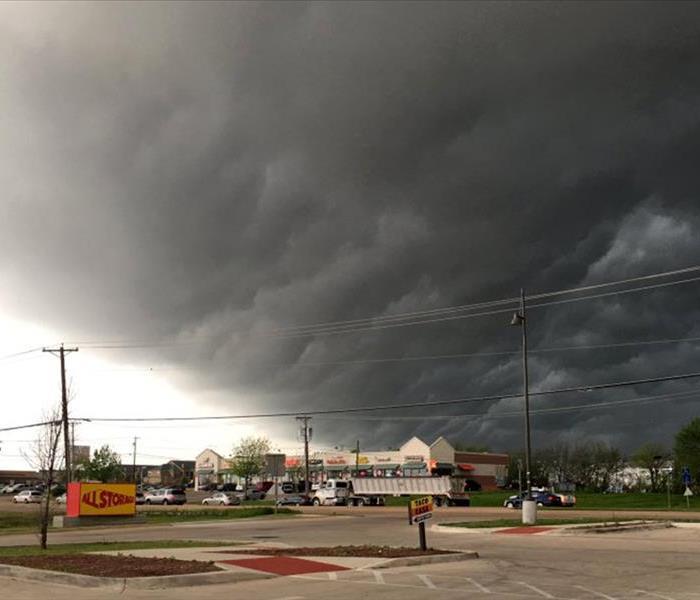 If your home is affected by severe weather, SERVPRO of Park Cities / North Garland is here to help. Call 214-522-3000
If your home is affected by severe weather, SERVPRO of Park Cities / North Garland is here to help. Call 214-522-3000
Summer showers are the worst, especially when they're accompanied by lightning, hail, flooding, and tornadoes. This end of summer has been a banner for all things storm related in Dallas and the surrounding areas, and SERVPRO of Park Cities / North Garland has been right in the thick of it, helping residents get back on their feet when disaster strikes.
With that in mind, there are some things that you can do to prepare now to protect you and your loved ones during this severe weather season. Check out this handy guide for Storm Safety and on Flood Safety from our Ready Rating Partners the Red Cross.
When Mother Nature pays a visit to the Lone Star State and in particular the Dallas, Park Cities and Garland areas, we're here to help. If you or someone you know needs help, Give SERVPRO of Park Cities / North Garland a call at 214-522-3000






 24/7 Emergency Service
24/7 Emergency Service


















